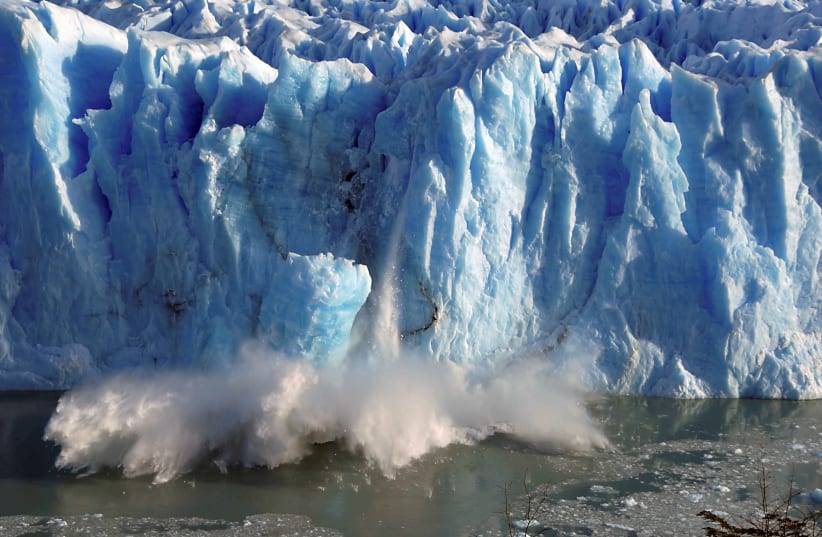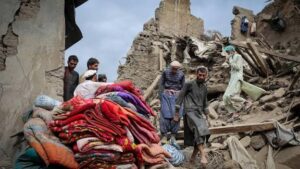Islamabad, March 22: A new United Nations report has raised alarming concerns about the rapid melting of glaciers and the consequences this will have on the global ecosystem, as well as the billions of people who rely on freshwater sources from these glaciers.
Released by UNESCO on March 22 to mark World Water Day, the World Water Development Report 2025 highlights how accelerating glacier melt threatens freshwater availability, particularly in regions that depend on these water sources.
The report reveals that 25 countries, home to a quarter of the world’s population, face extreme water stress each year.
Furthermore, around four billion people—half of the global population—experience severe water scarcity for part of the year.
Glaciers, which are crucial sources of freshwater, are under significant threat from climate change, pollution, and unsustainable human activities. If this trend continues unchecked, the report warns that glaciers could become a source of continuous conflicts.
One major concern outlined in the report is the depletion of freshwater sources.
The Andes mountain range, for instance, which provides half of the water flowing into the Amazon River, has lost between 30% and 50% of its glaciers since the 1980s.
Read More: Water Shortage Threatens Power Supply, Tariffs Set to Increase
If no action is taken, glaciers in Mount Kenya, the Rwenzori Mountains, and Mount Kilimanjaro could disappear entirely by 2040. The Hindu Kush–Karakoram–Himalayan system, referred to as the “Third Pole,” may lose 50% of its glacier volume by 2100.
In the Asia-Pacific region, alpine glaciers are melting at an alarming rate, often faster than the global average.
The report warns that reduced water flows, increased droughts, and disruptions to the availability of food, water, energy, and livelihoods are likely in the Hindu Kush-Himalaya region, which stores more ice and snow than any region outside the polar zones.
The glaciers in this area are the source of more than ten major river systems that sustain nearly two billion people.
Threats to Water Resources
The report also underscores that the agricultural sector, which accounts for 72% of global water withdrawals, is the most dependent on water.
This is followed by industrial use at 15%, and domestic use at 13%. However, climate change is threatening this delicate balance by increasing seasonal variability and uncertainty about water availability.
Pollution, land and ecosystem degradation, and natural hazards further exacerbate these challenges.
Read More: Pakistan’s Water Crisis Deepens as the Mangla Dam has Halts Electricity Production
The report also highlights the growing problem of emissions in mountain regions due to wildfires and dust storms, which are increasing the deposition of black carbon and other particulate matter on glaciers.
These impurities darken snow and ice surfaces, causing them to absorb more solar radiation and accelerate melting.
If these trends continue, the report predicts that water flows from mountains will become more erratic and uncertain, leading to additional risks such as debris flows, floods, avalanches, rock- and icefalls, landslide dam outburst floods, and glacial lake outburst floods.
These hazards could pose significant threats to communities, wildlife, and infrastructure.
Proposed Solutions
To address these challenges, the report calls for strengthened adaptation measures, integrated water resource management (IWRM), and comprehensive solutions that tackle climate change, environmental degradation, and pollution.
Regional collaboration is critical to these efforts.
The establishment of the Third Pole Regional Climate Centre Network (TPRCC-Network) by the World Meteorological Organization is an important step toward enhancing regional collaboration.
The report stresses that water-related crises should be prioritized in climate adaptation plans for mountainous regions in Asia and the Pacific, with joint adaptation strategies developed across national and administrative boundaries.
Also Read: Water Shortage to Reach 60%, IRSA on Provincial Water Sharing
Decentralized water and sanitation systems are also recommended for mountainous areas to minimize the risks of infrastructure damage in landslide-prone regions.
Furthermore, the report emphasizes the importance of engaging with Indigenous peoples and local communities, whose traditional knowledge of water systems could enhance collective efforts to respond to changing mountain cryospheric and hydrological conditions.
The report also calls for increased climate adaptation finance and private sector contributions to support these strategies.
It advocates for the mobilization of innovative and affordable funds at international, regional, national, and local levels to support water, agriculture, and energy planning and infrastructure investments.
In conclusion, the World Water Development Report 2025 highlights the urgent need for action to protect glaciers and ensure the sustainable management of freshwater resources, particularly in regions dependent on mountain glaciers.
Without effective interventions, billions of people could face severe water scarcity and other associated risks in the near future.









